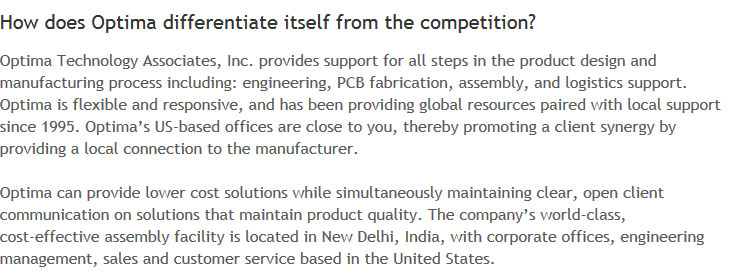The growth rate of LED Assembly related technologies has been on an exponential
and continuous rise among end-users, developers and manufacturers. The popularity
is a result of low energy consumption, high-efficiency, versatility in design and
applications, and small dimensions. A variety of companies specialize in the design,
manufacture and assembly of systems based on light-emitting diodes (LED), with a
focus on Solid State Lighting technology.
LED Assembly consists of the selection, placement and soldering of light-emitting
diodes in an arrangement that will eventually produce a functional electronic product.
The assembly may be manufactured in an automated or manual fashion. In manual (hand)
assembly, skilled technicians use precision to place LED components individually
onto circuit boards by way of specialized tools. Automated LED Assembly utilizes
Surface-Mount Technology (SMT) equipment to place thousands of LED's onto printed
circuit boards in an efficient, precise manner.
Benefits of LED Assembly
Automated LED Assembly reduces labor costs while maximizing production
rates.
In electronic manufacturing, the primary benefits of LED's include the small size
and ease of assembly.
Commercial and consumer electronics products are designed keeping in mind "green
technology" and reduced carbon emissions. The components of LED Assemblies provide
high power efficiency and high output (brightness), while being more environmentally-friendly
than traditional lighting counterparts.
For illumination, LED Assembly is also judges to be superior to other forms
of lighting in terms of cost-effectiveness.
LED-based lighting systems can last up to 50 times longer than other forms of lighting
technology.
Applications of LED Assembly
The applications that utilize LED Assembly technologies are potentially
limitless. Almost every industry incorporates LED's into the products they create
and LED component manufacturers have been met with increasing demand in the LED
component market globally.
As one example, high brightness LED components are currently seeing a major increase
in usage for backlighting in televisions, as a replacement for the prior standard
(CCFL technology).
